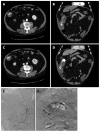Diagnosis of gastrointestinal bleeding: A practical guide for clinicians
- PMID: 25400991
- PMCID: PMC4231512
- DOI: 10.4291/wjgp.v5.i4.467
Diagnosis of gastrointestinal bleeding: A practical guide for clinicians
Abstract
Gastrointestinal bleeding is a common problem encountered in the emergency department and in the primary care setting. Acute or overt gastrointestinal bleeding is visible in the form of hematemesis, melena or hematochezia. Chronic or occult gastrointestinal bleeding is not apparent to the patient and usually presents as positive fecal occult blood or iron deficiency anemia. Obscure gastrointestinal bleeding is recurrent bleeding when the source remains unidentified after upper endoscopy and colonoscopic evaluation and is usually from the small intestine. Accurate clinical diagnosis is crucial and guides definitive investigations and interventions. This review summarizes the overall diagnostic approach to gastrointestinal bleeding and provides a practical guide for clinicians.
Keywords: Angiography; Capsule endoscopy; Colonoscopy; Computed tomography; Diagnostic techniques; Endoscopy; Enteroscopy; Gastrointestinal hemorrhage.
Figures





References
-
- Cutler JA, Mendeloff AI. Upper gastrointestinal bleeding. Nature and magnitude of the problem in the U.S. Dig Dis Sci. 1981;26:90S–96S. - PubMed
-
- Srygley FD, Gerardo CJ, Tran T, Fisher DA. Does this patient have a severe upper gastrointestinal bleed? JAMA. 2012;307:1072–1079. - PubMed
-
- Lanas A, García-Rodríguez LA, Polo-Tomás M, Ponce M, Alonso-Abreu I, Perez-Aisa MA, Perez-Gisbert J, Bujanda L, Castro M, Muñoz M, et al. Time trends and impact of upper and lower gastrointestinal bleeding and perforation in clinical practice. Am J Gastroenterol. 2009;104:1633–1641. - PubMed
Publication types
LinkOut - more resources
Full Text Sources
Other Literature Sources
Medical

